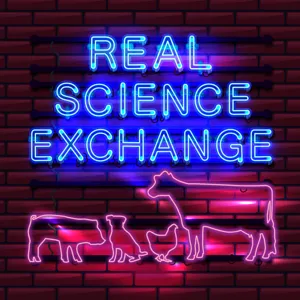Ep. 073: Navigating the Diet Struggle: Feeding Your Carb Sensitive Horse

Welcome back to the new year!
On this episode, co-host Katy Starr and guest expert Dr. Stephen Duren, PhD, MS, PAS discuss carbohydrate sensitivity in performance horses including:
- The differences between dietary starch, water soluble carbohydrates (WSC), ethanol soluble carbohydrates (ESC), and non-structural carbohydrates (NSC) – and what carbohydrate sensitive horses should and should NOT consume
- Understanding the role that alfalfa, teff grass, beet pulp, rice bran, flaxseed meal and more play in a horse’s diet
- Helping horse owners provide their horses with the right nutrient requirements in a safe manner, while minimizing the preparation workload
We cover A LOT in this episode - from breaking down the main function of the horse’s digestive system, to what is happening in the body of a horse who is sensitive to carbohydrates to discussing a fiber-based, grain-free, molasses-free solution for these types of horses who need extra calories due to a higher activity level or for those who struggle to keep weight on.
Have a topic idea or feedback to share? We want to connect with you! Email podcast@standlee.com
- Love the podcast? Leave a rating and review on Apple – https://podcasts.apple.com/.../beyond-the-barn/id1541221306
- Leave a rating on Spotify – https://open.spotify.com/show/3dmftQmwLKDQNueUcCJBZa
- Have a topic idea or feedback to share? We want to connect with you! Email podcast@standlee.com
- Share our podcast and learn more about our co-hosts at our Beyond the Barn podcast page
- SUBSCRIBE to the Beyond the Barn podcast email to be an exclusive insider!
- Find us on Apple, Spotify or Google Podcasts and SUBSCRIBE, so you never miss an episode.
_______________________________
- Check out the Standlee Barn Bulletin Blog
- Find more nutritional resources from Dr. Stephen Duren and Dr. Tania Cubitt at https://www.standleeforage.com/nutrition/
- Connect with Standlee on Facebook, Instagram, YouTube and TikTok
_______________________________
- *Views and opinions expressed by guests are their own and do not necessarily reflect the view of Standlee Premium Products, LLC.*














